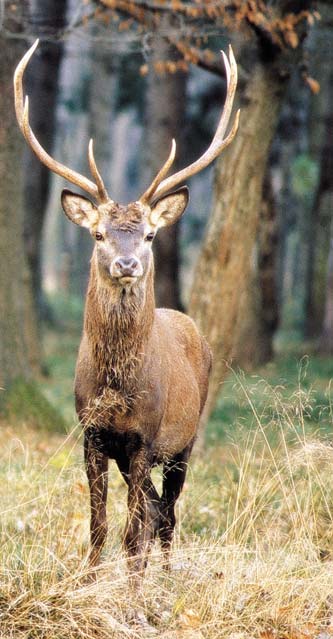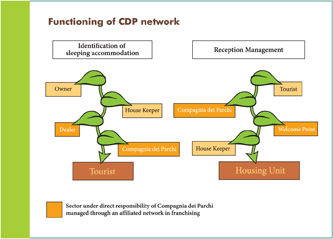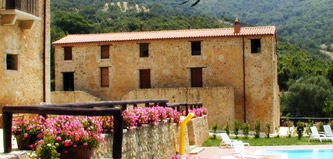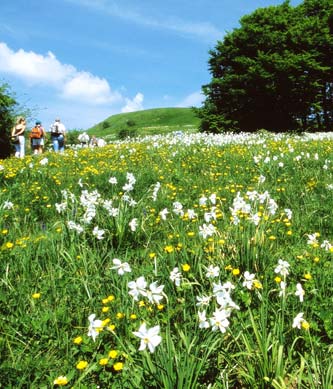Compagnia dei parchi, for sustainable tourism
Compagnia dei Parchi in practice
The idea to create Compagnia dei Parchi (CDP) stemmed from an analysis of the tourism potential of protected areas. The analysis revealed that although the areas did have the potential to provide modern high-quality services, they were providing non-standard products in a fragmented way. This meant that they could not be included by tour operators in their packages or as part of the extended tourism market. The analysis highlighted the need to:
• Examine the possibility of developing an integrated system of local tourism through an ongoing dialogue with the local communities.
• Create an integrated tourism product that would combine the providing of hospitality with all the components of the tourism system, with value- and experience-based planning able to bring together local culture, natural heritage, local produce and traditional crafts.
• Create a national-level capacity to place these products on the market, while ensuring that the bulk of the value chain remains local.
• Supply and network tourism products that are homogeneous and comparable in terms of quality standards.
This basis then gave rise to the idea of creating a tour operator/service provider able to bridge the business and marketing gap for the tourism and productive systems of the protected areas in terms of both the supply and demand sides.
Created with public and EU funding, CDP has become a growing and sustainable structure. In Europe, CDP represents an innovation because of its functions for promoting local development, beginning with the organisation of the supply of tourism services. It is an integrated system that brings together tourism, agriculture, crafts, and hotel and non-hotel accommodation.
CDP is unique because it has adopted a bottom-up structure that promotes the many and varied interests of the people living in protected areas. It acts as a link between various social groupings, fostering dialogue among local actors, and valorising their architectural, environmental and tourism resources. 
CDP OPERATIONAL SYSTEM
CDP is a non-profit consortium. It can receive funding from a range of sources:
• Public funds from local, national and international initiatives.
• Private funding from its own activities of intermediation, marketing and promotion of accommodation structures (hotels, houses and agritourisms) that have chosen to join CDP’s network and pay a regular membership fee for its services.
• Funding from projects created, implemented and proposed by CDP.
Through its network of institutional partners (Legambiente e Federparchi) and members, CDP maintains regular contact with park authorities through meetings organised locally.
CDP operates through an agile organisation that consists of:
•a head office, responsible for all reservations and for marketing tourism-related products and services;
•a network of associated accommodation structures. 
CDP’s head office
CDP’s head office keeps in regular contact with traditional and non-conventional accommodation structures such as hotels, houses, farmhouses, Alpine cottages and agritourisms. In this way, the head office establishes agreements that give CDP priority when booking rooms or whole structures. In addition, the head office provides booking, communication and promotion services for the accommodation structures. In other words, it identifies potential tourists for the accommodation structures and promotes these structures through catalogues, agreements with tour operators, Internet promotions and trade fairs, such as the International Tourism Exchange. The accommodation structures pay CDP for its services and, in some cases, promote the CDP model among other local actors.
The CDP helps to prevent the deterioration of the often disused properties in the park areas, and it favours income generation from tourism for all the dwellings in the area, which are generally second homes.
Thus, CDP has many functions: it promotes park tourism; it creates links between the demand and supply sides of tourism; it fosters a culture of tourism and hospitality in Italy’s less developed areas, which often coincide with the location of the parks. In this way, it favours the growth of a tourism-based enterprise culture, a goal it also pursues through targeted training activities.
The structure of the head office – co-ordination, sales, marketing and training
•Planning and co-ordination office: This consists of personnel responsible for establishing and strengthening links with protected areas and with providers of tourist accommodation. The office also draws up projects that can be financed by national and international initiatives or by private enterprises that want to apply the CDP model in specific areas.
•Sales office: This consists of personnel responsible for making contracts with accommodation structures and for maintaining contacts with tour operators, travel agencies and other actors interested in booking holidays in the park areas.
•Marketing office: This consists of personnel responsible for developing marketing and communication strategies to raise the profile of CDP in the tourism market.
•Training office: This consists of personnel responsible for preparing training courses on tourism marketing, EU and national tourism regulations, and the CDP organisational model.
The network for organising tourism-related services
In terms of organisation, CDP uses a network to organise, promote and manage hospitality in the associated accommodation structures and properties. This network is the most effective response to the fragmentation and diversity of the supply of hospitality and to the difficulties that the individual tourism operators face in breaking through. The network organisation enables the development of a broad-based supply that is able to cater to a wide range of requirements (in terms of location, type and price). Therefore, it can reach out to a broader range of potential tourists, and meet the needs of a more demanding tourism market. 
The network for managing the tourism services and structures consists of:
•Welcome Points: They welcome tourists on their arrival at their holiday destination (1st-level associate). These are local enterprises, co-operatives and individuals linked through an Intranet with CDP’s head office. They handle the local bookings and introduce the tourists to the House Keeper, who may in some cases also be the Welcome Point.
•House Keepers: They keep the keys to the accommodation and hand them to the tourists. The House Keepers either run tourist-accommodation structures or are "administrators" of one or more properties or of a "scattered condominium", on the basis of a further contract stipulated with the owners.
•Dealers or intermediaries: They develop and co-ordinate the network of House Keepers and Welcome Points in their area (2nd-level associate). The dealers may also be the managers of the Welcome Points and House Keepers.
Application of the operational model in the National Park of the Gran Sasso and Monti della Laga
The National Park of the Gran Sasso and Monti della Laga is located mainly in the Abruzzo Region, and in part in the Marche and Lazio Regions. In Abruzzo, the park comprises 40 municipalities of the provinces of L’Aquila, Teramo and Pescara and 5 mountain communities. In socio-economic terms, the area is characterised by a considerable dependence of the local economies on income from outside the area in the form of pensions, commuting, remittances from migrants, and seasonal income flows from tourism; a limited range of productive activities, which is undoubtedly an element of structural weakness in the local economy; a rate of population growth that is well below that in the rest of the Abruzzo Region.
CDP has set up a Learning Centre to serve as a hub and catalyst for the creation of a network of outlying information centres, and as a reference point for the network of local actors. The project has undertaken the following activities:
•It has formed a local network of 3 Tourism Information Centres (TICs), providing training and information in the Abruzzo area of the park, and linked to the Learning Centre.
•It has held training courses at the Learning Centre for information and guidance operators, tutors, trainers, and co-ordinators of the Centre and outlying centres. The TICs have used distance-learning modules developed by CDP and the Learning Centre, for induction into the CDP network. Each TIC has been provided with its own operational structure and an Internet link with the Learning Centre (MSN Messenger). In addition to the IT facilities, the operational structures of the network provide training and tourism-information services. They are the operational tools of CDP, acting as intermediaries with the diverse local supply of tourism-related services both actual (existing accommodation) and potential (houses that may be available as tourist accommodation).
•It has been an active participant in initiatives, using targeted information, and taking part in local fairs and exhibitions.
The Learning Centre employs 2 professionals who provide training and advice. The TICs employ 3 skilled operators, who are in constant contact with the partners and the head of the Learning Centre to guide decisions and plan activities. The induced employment, estimated at 30 jobs, is mainly in: accommodation maintenance and management; maintenance and management of local paths and itineraries; expert guides; co-operatives that organise excursions and transfers; and communication and information activities.
DOWNLOAD THE BROCHURE PDF
english (0.9 MB)albanian (0.5 MB)
Spanish (0.9 MB)
ONLY TEXT
•Compagnia dei Parchi in practice








 COUNTRY OF ORIGIN
COUNTRY OF ORIGIN OUTSTANDING IDEASS PROJECTS
OUTSTANDING IDEASS PROJECTS